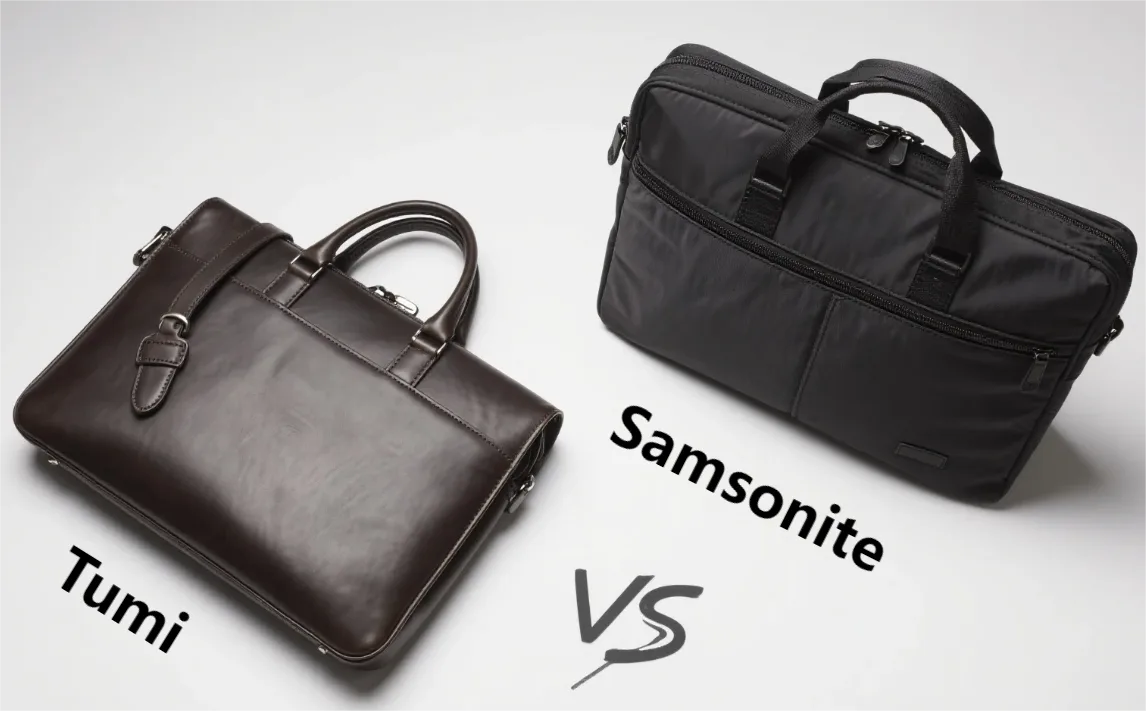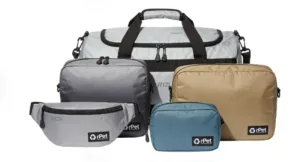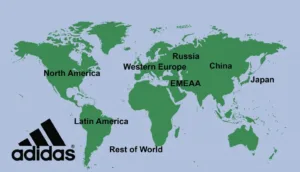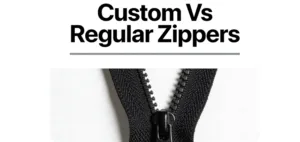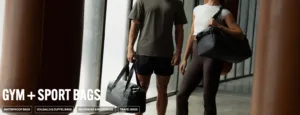Better business performance often starts with choosing the right accessories, and when it comes to premium bags, the Tumi briefcase and Samsonite briefcase are two of the most popular choices. Both brands are known for their reliable quality and strong reputations, offering distinct advantages in design, functionality, and durability. For professionals seeking a polished look and efficient daily use, a well-crafted leather briefcase is more than just a storage solution—it’s an essential companion for commuting and business travel.
Although Tumi and Samsonite both occupy the premium briefcase segment, they cater to different styles and user needs. Selecting between them depends on factors like material preference, structure, weight, and budget. In this article, we’ll provide a detailed comparison of the Tumi briefcase and Samsonite briefcase from multiple angles, helping you understand their key differences and choose the leather briefcase that best fits your professional lifestyle.
Contents
1. Brand Overview: Tumi vs. Samsonite

Tumi was established in 1975 in the United States and is widely recognized as a high-end brand specializing in luxury business and travel products. Its style is defined by minimalism, modern aesthetics, and premium materials, catering to professionals who value sophistication and exclusivity. Think of Tumi as the tailored suit of the briefcase world—refined, polished, and built to impress in every setting. Interestingly, the brand’s name was inspired by a Peruvian ceremonial knife, reflecting its founder’s Peace Corps experience in South America—a nod to global culture and craftsmanship. As a result, Tumi briefcases, especially leather briefcases, typically start at $400 and can go significantly higher depending on customization and material.
Based on its longer history and mass-market positioning, Samsonite offers a different kind of value. Founded in 1910 in Colorado, the brand has built its reputation around practicality, durability, and accessibility. Where Tumi offers elegance, Samsonite delivers versatility—think of it as the Swiss army knife of business luggage. One of its landmark innovations was the launch of the world’s first wheeled suitcase in the 1970s, which forever changed how people travel. Its briefcases are generally priced between $100 and $300, making them a smart choice for professionals seeking solid performance at a more affordable price range.
2. Design and Materials

Tumi leather briefcases blend high-end aesthetics with modern functionality by combining premium materials such as ballistic nylon, leather, and aluminum alloy. This combination creates a sleek, refined look that is both durable and sophisticated, making it ideal for business professionals who seek a balance of style and performance.

Meanwhile, Samsonite emphasizes practicality and lightweight convenience, often using polyester or polycarbonate materials. Their designs focus on versatility and durability with a more neutral or business-casual style, appealing to a wide range of users who prioritize affordability and everyday functionality over luxury.
3. Features and Usability

In terms of functionality, Tumi briefcases stand out for their high-performance features tailored to meet the demands of business professionals. The use of FXT Ballistic Nylon offers excellent water and stain resistance, ensuring long-lasting durability in various conditions. Tumi’s organizational design is intricate, providing numerous hidden pockets and compartments that help users keep laptops, documents, and accessories well-organized and easily accessible. High-end Tumi models, such as the Alpha series, often include built-in USB charging ports, adding convenience for charging devices on the go. Additionally, Tumi briefcases are equipped with sleek luggage straps or back panels, enabling secure attachment to rolling suitcases and simplifying travel.


Samsonite briefcases focus more on practicality and everyday use. Their water resistance varies depending on materials like polyester or polycarbonate, which generally offer good protection but may not match the premium quality of Tumi’s ballistic nylon. Samsonite’s interior layouts are straightforward and functional, designed to hold daily essentials and travel items without excessive complexity. Some Samsonite models also feature USB charging ports, although this is less common. Most Samsonite briefcases come with luggage straps or back panels for easy travel compatibility, appealing to frequent travelers looking for reliable and versatile bags at a more accessible price.
In summary, Tumi delivers a premium, feature-rich experience aimed at business elites, while Samsonite offers balanced functionality and affordability for a wider range of users.
4. Durability and Warranty

Both Tumi and Samsonite produce durable briefcases with quality materials and reliable warranties. Tumi uses highly wear-resistant fabrics and reinforced stitching, backed by a 5-year global warranty and extensive repair support through their retail stores worldwide. Samsonite offers good durability at a more affordable price point, with warranty periods ranging from 3 to 10 years depending on the model, along with solid customer service.
So, which warranty and durability package better suits your needs? Are you looking for premium global support and long-term assurance, or a more flexible warranty with practical durability at a competitive price?
5. Price & Value

Expert Opinion:
Comparing Tumi and Samsonite briefcases means looking at two different ways to invest. I see it as comparing different investment philosophies. Based on my experience working with corporate executives and procurement specialists, I’ve learned that Tumi offers what I term ‘investment luxury.You pay more, and it’s not just for the brand. You get materials and construction that, in my observation, last 3-5 years longer than less expensive options. So, even though you pay more upfront, my analysis suggests it can mean a lower cost each time you use it. On the other hand, Samsonite provides what I call ‘strategic value.It gives you about 80% of the high-end features for around 40% of the price. So, if you’re an organization managing big purchasing budgets, or an individual looking for the best mix of quality and good financial sense, I recommend making a choice based on your immediate needs and how useful the briefcase will be long-term. I suggest you don’t just compare the price tags.
————Morgan Reynolds, Procurement Strategy Consultant and former Chief Product Officer at Executive Gear International
After evaluating durability, features, and design, the next key factor to consider is cost. Tumi clearly positions itself as a premium brand, often pricing its leather briefcases at $400 or more. The investment reflects its high-end materials, refined design, and long-term durability.

On the other hand, Samsonite offers mid-range pricing—typically between $100 and $300—making it a practical choice for professionals who value function and reliability without the luxury price tag. Ultimately, the question is: are you paying for long-term prestige or smart everyday utility?
Which Leather Briefcase Is Right for You?

After understanding the five key differences—brand, design, functionality, durability, and price—you now have a clearer picture of what sets a Tumi briefcase apart from a Samsonite briefcase. But theory alone isn’t always enough when it comes to making a sound procurement decision.
According to a 2024 report by Global Travel Goods Association (GTGA), over 67% of corporate buyers consider real-life application scenarios more influential than brand reputation alone when selecting business bags. Matching a briefcase to specific user demands—be it for executive travel, daily commutes, or hybrid work environments—is a key factor in reducing product returns and maximizing ROI.
To help you make a truly informed choice, let’s take it one step further. By mapping brand strengths to actual business scenarios, you’ll see which option best fits your operational requirements and employee use cases. Here’s a breakdown based on typical usage patterns:
| Scenario | Recommended Brand | Why |
|---|---|---|
| Frequent Business Travel & Formal Meetings | Tumi | The sleek leather finish, professional aesthetic, and robust build make it ideal for high-stakes environments where image and performance matter. |
| Daily Commuting on a Budget | Samsonite | With its solid construction, reasonable pricing, and reliable organization, it’s perfect for everyday use without overspending. |
| Need for Personalization & Premium Services | Tumi | Tumi offers engraving, luggage tracking, and other bespoke services that cater to users looking for a tailored experience. |
| Occasional Travel or Light Business Use | Samsonite | Offers all the essential functions at an accessible price point, making it a smart, practical choice for casual users. |
Selecting the right briefcase—whether a premium leather model to reinforce your professional image or a practical option for daily operations—ultimately comes down to aligning product capabilities with your specific business needs.
In today’s competitive landscape, where employee efficiency and brand perception both matter, the briefcase you choose can subtly—but significantly—impact performance and client impressions. A study by Corporate Gear & Accessories Council in 2023 revealed that 78% of executives believe high-quality business gear positively influences brand perception, while 65% of enterprise procurement managers rank functionality, durability, and after-sales service among their top purchasing criteria.
Whether you’re sourcing top-tier executives who frequently meet with clients or outfitting a mobile workforce needing lightweight and versatile options, briefcases are more than accessories—they’re daily business tools. Choosing the right one ensures fewer replacements, stronger brand alignment, and better user satisfaction across teams.

